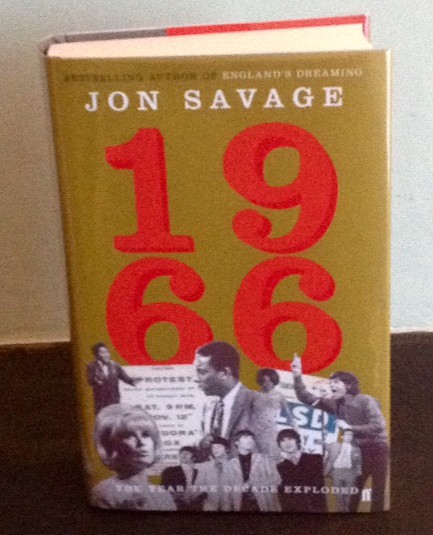Inspiring Older Readers
 posted on 20 Dec 2015
posted on 20 Dec 2015
1966 by Jon Savage
Jon Savage’s mighty new book, 1966, confirms him as one of the premier documenters and analysts of twentieth century popular culture. His earlier study of punk – England’s Dreaming – is one of my all time favourite music-centred books and I’ve also read and still use Teenage: The Creation of Youth Culture in my teaching.
1966 is a monumental achievement which inter-weaves British and American trends in pop and rock music with unfolding world events that influenced the shape and content of popular (especially youth) culture. I was only 12 when the year 1966 dawned and so I was in generally blithely unaware that the world was in such turmoil but Savage takes us through the months of the year unfolding the extraordinary events of this pivotal period. And what a year it was.
The twelve months into which the book is divided is a clever device but it’s not generally one which is chronologically strictly observed. Savage moves backwards and forwards in time if he feels he needs to establish the roots of an issue or the trajectory it was destined to follow. What the calendar divisions do enable him to do is to allocate dedicated space to specific generic events such as the growth of the civil rights movement in the U.S. or the emergence of the embryonic second wave feminists.
I like the way Savage keeps bringing us back to some key themes. He uses the Beatles as something of a metaphor for the significance of the year. Their maturity as a band, the deepening of their experimentation and social conscience, is reflected in the way 1966 became the year in which popular culture graduated into a political and socially significant force. He also uncovers the emergence of psychadelia – not just as a drug phenomenon but also as a way of seeing the world, an essentially anti-establishment statement of belonging for young people rejecting the values of their parents.
1966 was also the year black music broke through into the majority white populations of Britain and America. Savage documents the way in which the Stax and Tamla Motown labels began to dominate the pop music charts whilst at the same time being the backdrop to an increasingly fractious conflict in the States between concepts of Black Power and White Backlash.
Lurking behind everything that was happening in 1966 was the growing shadow of Vietnam. The leaking of politics into pop and rock music was largely the result of anti-Vietnam (or, at least, anti-war and anti-nuclear ) sentiment – protest singers and protest songs and the growing status of Bob Dylan was being defined in this significant year. The impact of Vietnam was trans-Atlantic but more significant, of course, for the Americans and Savage points out later in the book that much of the changing spirit of the age was interpreted by the British as a new fashion statement rather than a battle for dominance over the new world order.
Of course, 1966 was not the real start of things nor was it the end. What Savage does establish however is that all changes in the collective zeitgeist have a key or pivotal moment and 1966 might well have a claim to be the centre of the phenomenon we now think of as the liberal or revolutionary1960s.
Putting the serious cultural history to one side, this book is a delicious read for those of you who like to read about the inside story of some great pop music and the people who made it. You’ll love this glimpses behind the commercial facade that Savage gives us and the 500+ pages fly by with so little effort that you’ll find time is suspended while you have the book in your hand.
Terry Potter
December 2015